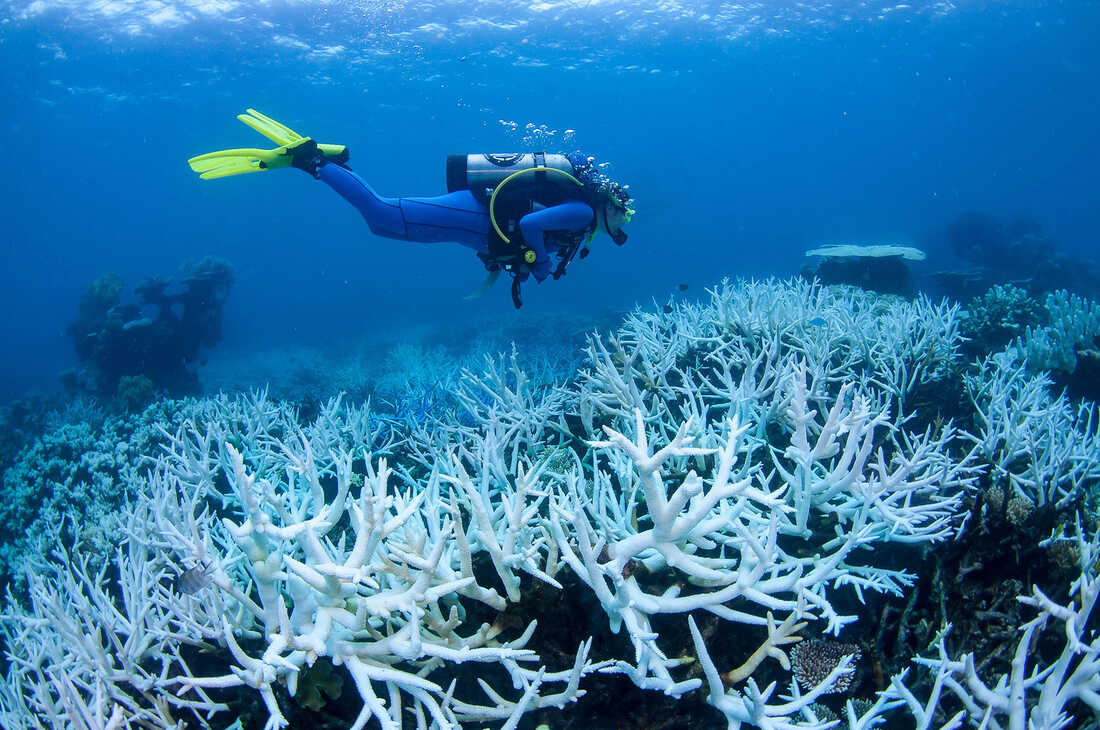
A common misconception is that corals are a part of the plant kingdom and not the animal.Corals are the longest-lived animals, capable of growing for hundreds of years. Extremely sensitive to their environment, a subtle change in temperature or the pH level can directly affect the relationship between the algae zooxanthellae and the corals. Zooxanthellae, microscopic algae, help bring colour to these white skeletal structures. Due to high temperatures, these corals expel the algae and turn colourless. Usually, when corals lose their vibrant colours and turn pale white, it is referred to as coral bleaching.
This bleaching, though extremely harmful, cannot cause irreplaceable harm to their survival. It is more like a distress signal than a sign of death. The drastic difference in the climate, along with the greenhouse effect, and ocean acidification, has caused extreme damage to the survival of their species. Of course, low tides, excess sunlight and pollution also end up impacting this change but the change in temperature remains to be the leading reason.
Coral reefs are indispensable to the ecosystem. Hundreds and thousands of aquatic creatures depend on these reefs for survival. They help provide shelter against other bigger species, while also supporting organisms which are on the bottom tiers in the food chain. Covering less than one per cent of the ocean floor, these reefs amazingly help support almost a quarter of all marine species. Destruction of reefs may cause the extinction of the same species. Being important not just to living organisms, these reefs act as natural barriers when exposed to waves, storms, etc, protecting everything under their ecosystem from harm.
When we take a look at the socio-economic impact coral bleaching does, we majorly look at how it affects the local human communities. Protection of their shelters from storms and waves, loss of interest in the aesthetics of reef tourism and the resulting loss of revenue, and reduced amount of fish during targeted fishing are only a few ways how coral bleaching impacts humans. Coral reefs also have beneficial medicinal values, from treating heart diseases to treating cancer, the list is endless. So keeping them safe is of utmost importance.
Taiwan, which was once known as the coral kingdom, began seeing vast coral bleaching in its oceans in 2020. The water bodies in Taiwan had a recorded sea temperature of 30 degrees celsius with the optimal range being 20-28 degrees and corals thrive in temperatures ranging from 23 degrees Celsius to 29 degrees celsius. In 2021, Taiwan noted 31 per cent of the reefs that were beyond the extent of being saved. Corals require about ten years’ time to recover from bleaching; however, they get bleached so very often that they barely get time to recover. Due to the massive scale of bleaching in Taiwan, there was little to no hope of their recovery.
Although it seems hopeless to able to bring back these corals from the dead, there are countless ways to prevent this from happening in the future. The first step to preservation is awareness. Knowing the gravity of the situation makes it more likely for people to get up and take a stand against it. Most of the destruction caused to these reefs is the result of pure ignorance. We all already know that water conservation and reduction of plastic are the most obvious ways of preventing bleaching. Choosing sustainably fished seafood , long-lasting light bulbs (since energy-efficient light bulbs help reduce the emission of greenhouse gasses) and checking whether the contents of the cosmetics you use can not harm the coral life are a few more ways.
There is still time, there always is. It’s only a matter of who wants to remain a silent bystander to the suffering of these aquatic animals and who wants to take a stand and protect them the way they continue to protect us.

